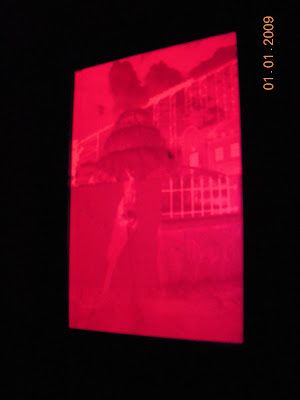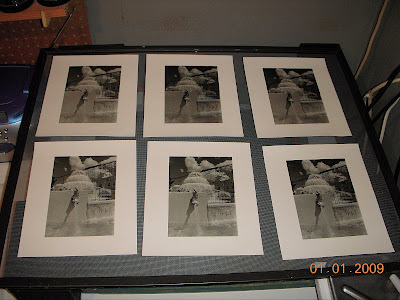I decided to start the year off right and do some work down in my darkroom, while doing a little organizing in preparation for working I came across a draft of a review of a review for the 23 Sandy Gallery
Resurrection show in May of 2008. I never got around to posting it but after reading it I thought it was a waste not to. So here it is.
The Oregonian
review by D.K. Row.
My take on it:
The review primarily concerns itself with the surface details of some of the work and not the artistic commitment of the photographers represented. Leave the technical aspects to the “wonks” it is advised and “…simply enjoy, allow yourself to be mesmerized—or alternately bored and unimpressed because some of the work is forgettable, too—.” This approach to gauging artistic merit may satisfy the standards for artistic criticism in an age where art has become more facade then foundation more manufactured then created. Designed to be disposable rather then to endure. To invite the viewer to simply enjoy the image and ignore how it came in to being misses the point of this particular show of the handcrafted silver gelatin print, tintype, glass plate and other techniques unique from the "Monotgraphy" that currently has a stranglehold on art photography. The work in this show represents more then just the “picturesque” image but the religion of skill and craft. This is work by photographers who choose to be challenged by the technology rather then serving it like some worker on an assembly line. This is the practice of craft which involves faith and risk . The “hollow perfection” of the “anyone-can-take-a-picture digital age” is about manufacturing the acceptable (and soon forgettable) standard and this show is about trying to attain the mesmerizing exception. The artistic crap shoot of human creativity which either produces the mundane or the iconic. In art one insists on being totally engaged in the process and risking failure and embracing mistakes. How can the work be considered challenging if the photographer is not challenged? It’s not supposed to be easy it is supposed to be work. Photography is losing much by abandoning methods that challenge and test ability and cull the mediocre from the sublime. Photographers like Dorthea Lange or Paul Strand have no digital age counterpart because the technology does not require them. A "photographer" being someone who has to learn to master the camera beyond memorizing the instruction manual. The relationship between a camera and the photographer should be similar to the relationship between a muscian and an instrument. It is the photographer who brings things in to focus. It requires practice and discipline and commitment to make something wonderful.
William Morris understood the danger of replacing skill and craft with manufacturing at the dawn of the industrial age because it threatened to diminish our humanity. It seperated us from the act of creation. It supplanted a dynamic constantly evolving process imbued with the soul of the creator for a predetermined and set constant. The souless creation built by a machine or by workers organized like parts of a machine as in the assembly line.
The essence of art is that creation of something from a disordered state of being to an ordered state of being reversing the natural order. Nature breaks things down, the artist builds things up. Art should be the tangible evidence of the human element taking the shapeless void and transforming it in to something sacred. It endures . The work should be made up of more then just the materials that compose it but the soul of its creator. I don’t know what William Morris thought of photography and as an artist of the old school he probably saw the camera as a technological shortcut to learning drawing and painting and that a photograph could never have the same vaule as an artistic object as a painting.
Certainly the camera was better capable of rendering in objective fashion the external world then drawing and painting. The camera though never replaced drawing and painting and any 19th century painter could still go to an art supply store today and buy everything he needed to work in the medium they loved. One cannot say the same thing for a pre digital age photographer who works with film and the darkroom .
The work in this show represents more then just images but a more balanced relationship between art and technology and photographs that are committed to preserving that sacred human element that is the essence of art.











.jpg)






.JPG)






















.jpg)
.jpg)


.jpg)

